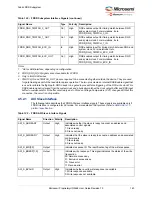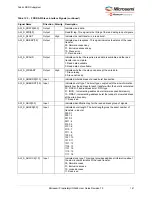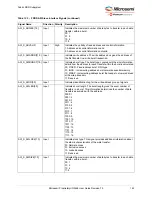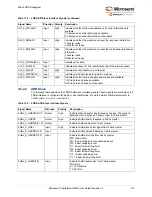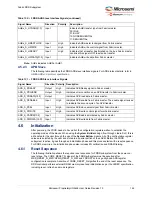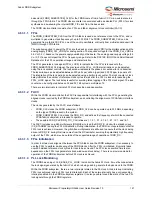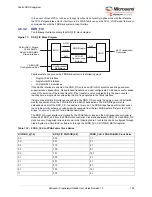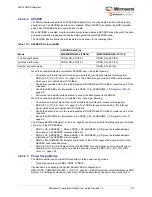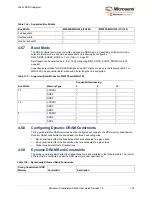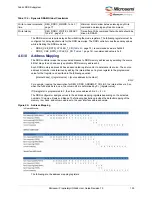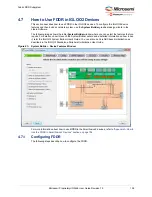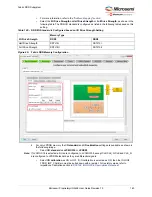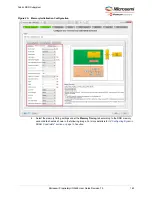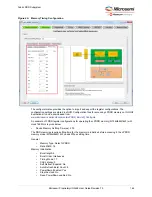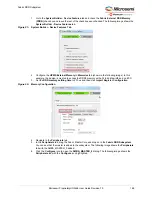
Fabric DDR Subsystem
Microsemi ProprietaryUG0446 User Guide Revision 7.0
153
4.6.7
Burst Mode
The DDR controller performs burst write operations to DDR memory, depending on the Burst mode
selection. Burst mode is selected as sequential or interleaving by configuring
REG_DDRC_BURST_MODE to 1 or 0 (
page 87).
Burst length can be selected as 4, 8, or 16 by configuring REG_DDRC_BURST_RDWR (
Supported burst modes for DDR SDRAM types and PHY widths are given in the following table. For
M2GL050, only sequential Burst mode and a burst length of 8 is supported.
4.6.8
Configuring Dynamic DRAM Constraints
Timing parameters for DDR memories must be configured according to the DDR memory specification.
Dynamic DRAM constraints are subdivided into three basic categories:
•
Bank constraints
affect the transactions that are scheduled to a given bank
•
Rank constraints
affect the transactions that are scheduled to a given rank
•
Global constraints
affect all transactions
4.6.9
Dynamic DRAM Bank Constraints
The timing constraints which affect the transactions to a bank are listed in the following table. The control
bit field must be configured as per the DDR memory vendor specification.
Table 134 •
Supported Bus Widths
Bus Width
M2S050/M2GL050 (FG896)
M2S150/M2GL150 (FC1152)
Full bus width
√
√
Half bus width
√
√
Quarter bus width
–
√
Table 135 •
Supported Burst Modes for M2S150 and M2GL150
Bus Width
Memory Type
Sequential/Interleaving
4
8
16
32
LPDDR1
√
√
–
DDR2
√
√
–
DDR3
–
√
–
16
LPDDR1
–
√
√
DDR2
–
√
–
DDR3
–
√
–
8
LPDDR1
–
√
–
DDR3
–
√
–
DDR2
–
√
–
Table 136 •
Dynamically Enforced Bank Constraints
Timing Constraint of DDR
Memory
Control Bit
Description


